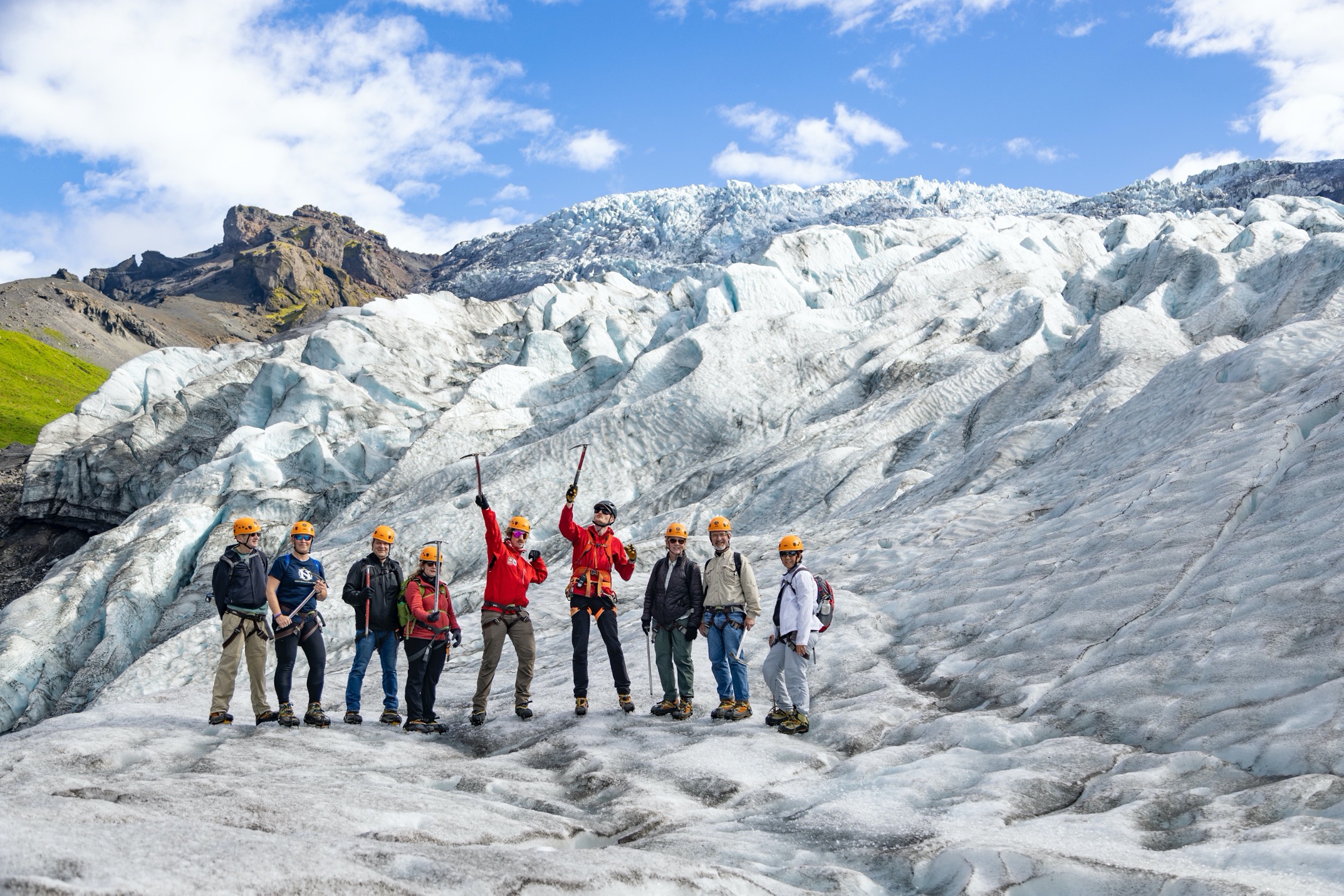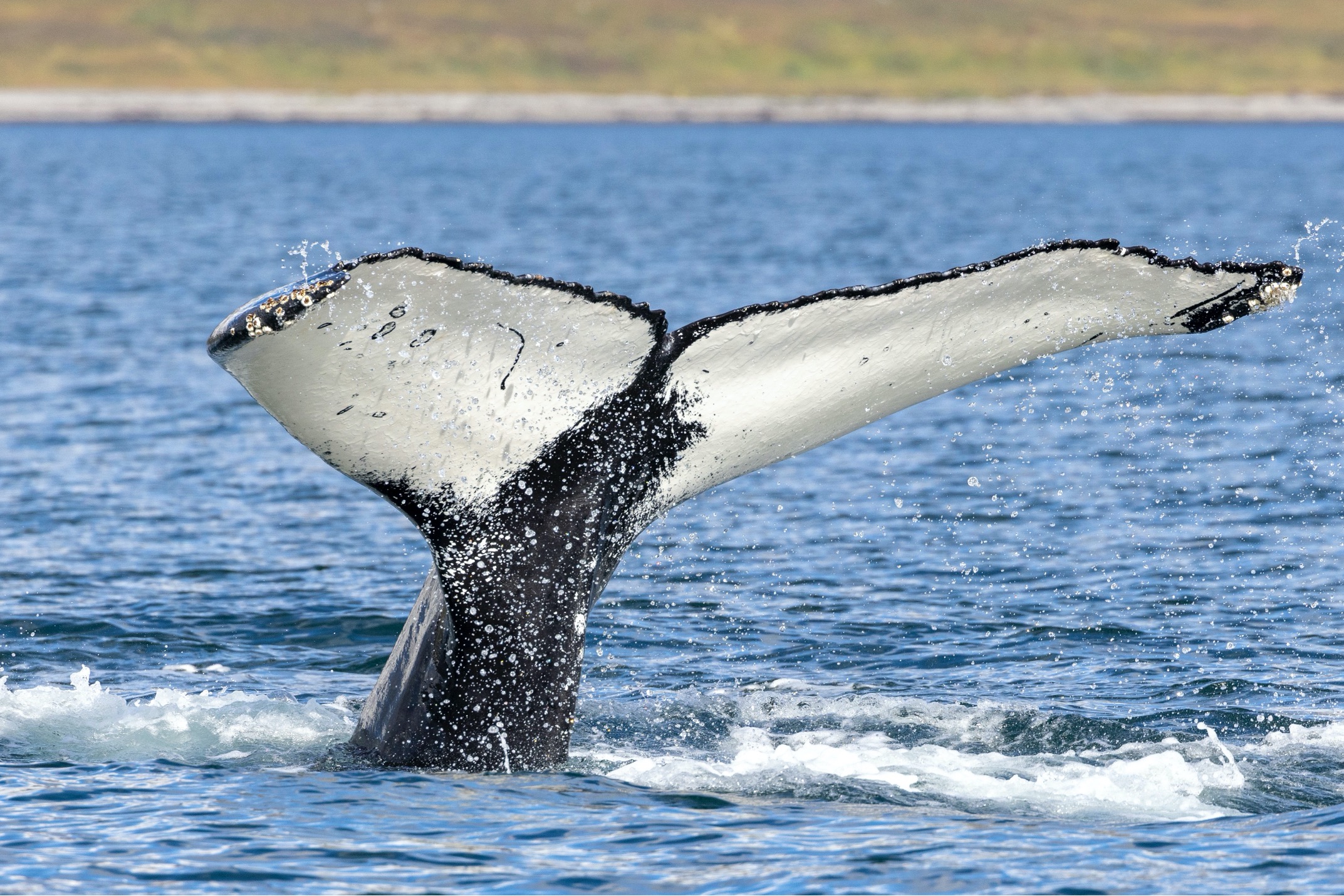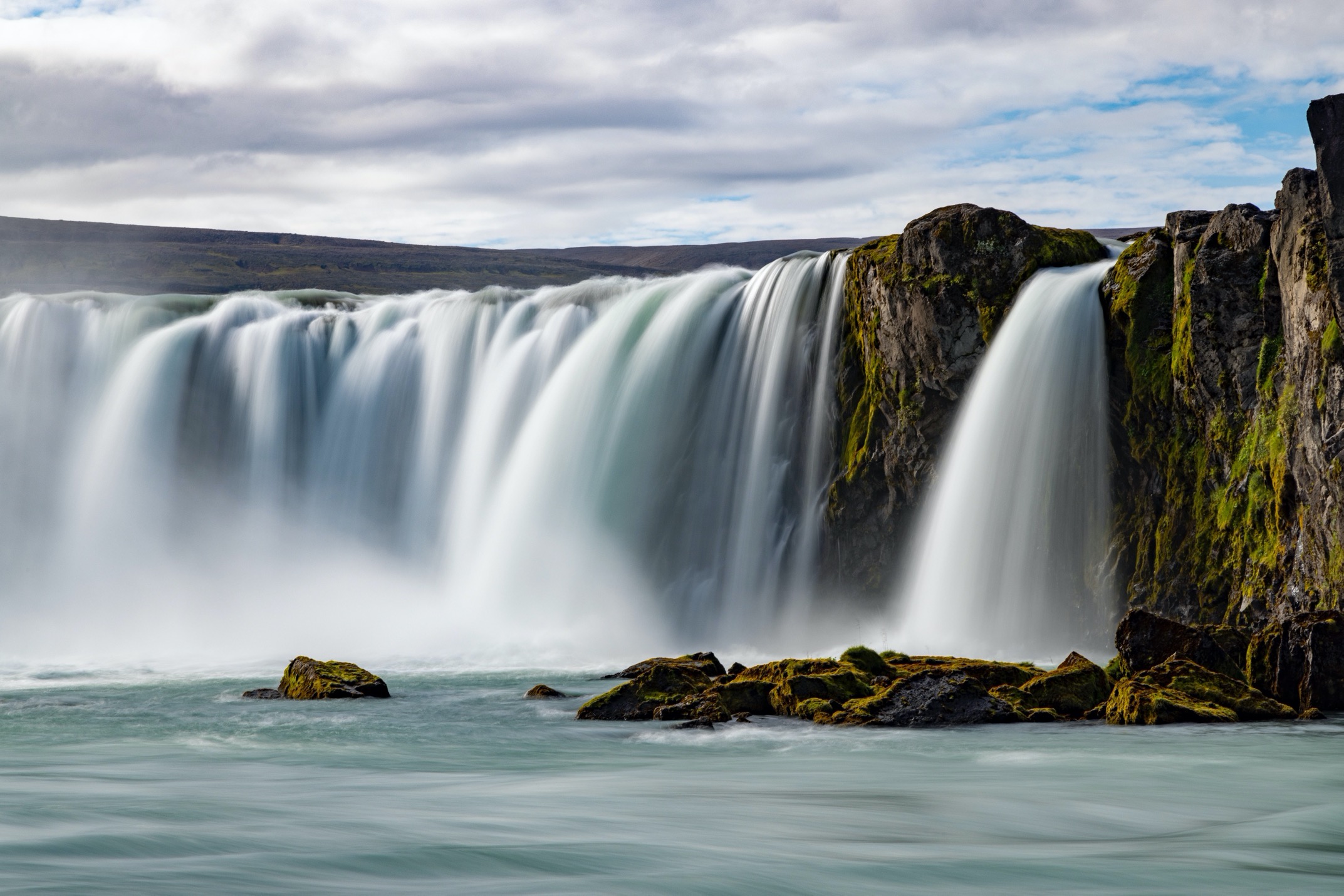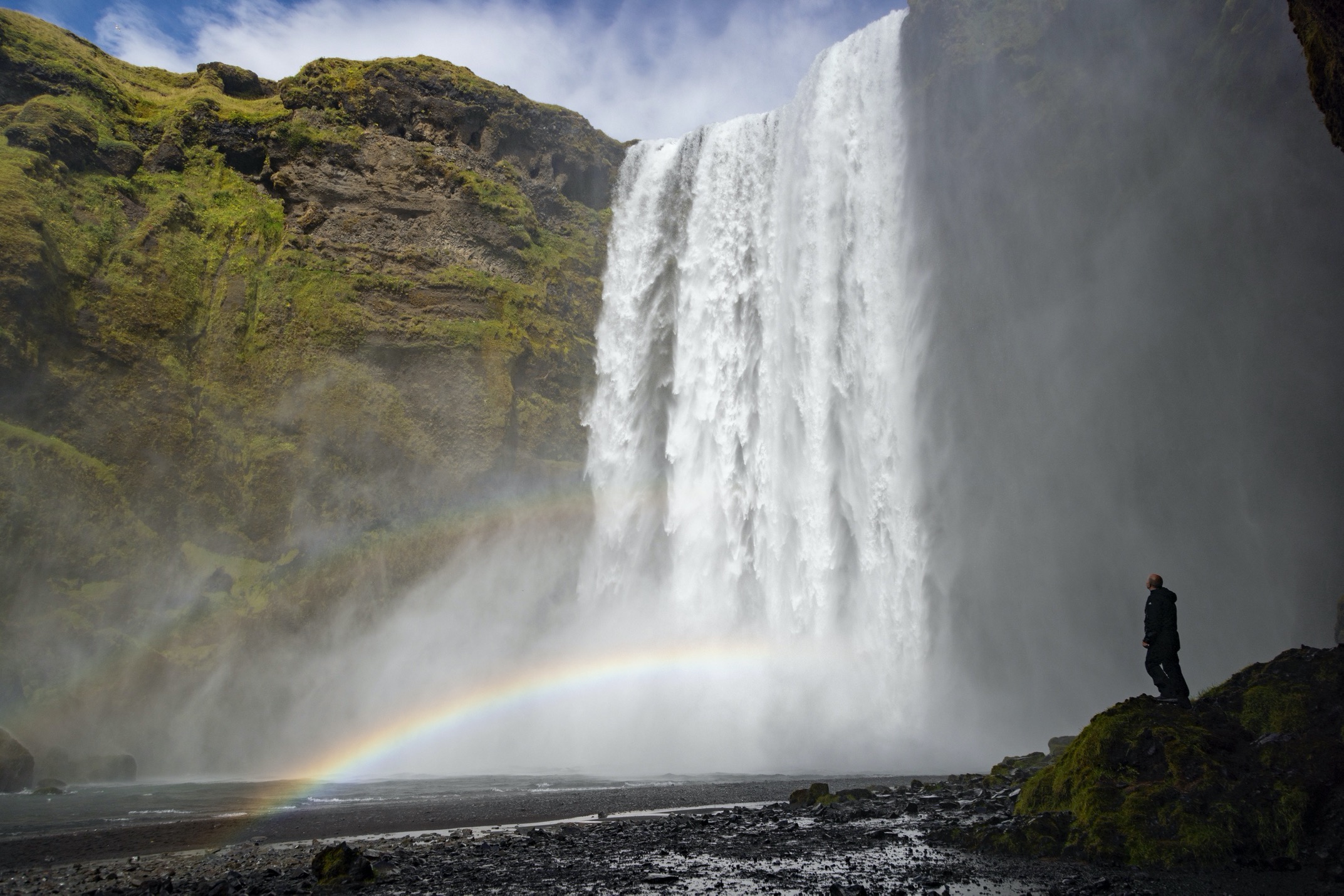
What’s in My Camera Bag – Iceland
To say that Iceland is an epic photo destination is quite an understatement. It could quite possibly be one of the best places for landscape photography on the planet. Between extraordinary waterfalls, some of the world’s largest glaciers, and a vast landscape teeming with volcanic outcroppings, Iceland is a photographer’s dream.
If you’re headed to Iceland on a special photo adventure, you’ll want to have all the right gear. Read on for all the details!

Wide-angle Zoom Lens
This is going to be your primary lens throughout the adventure and we’re talking about your classic 24-70mm and 24-105mm varieties (or 18-55mm or 18-70mm on crop frame sensors).
There are landscapes galore and having not just the wide end of the spectrum at 24mm, but also being able to zoom in with some telephoto power is key. This helps tremendously with framing your photos and getting the right composition in-camera so that you can maximize resolution and avoid unnecessary cropping when on the computer.
Because nearly all of your landscape photos will be best at relatively wide depths of field (i.e., f/8 or f/11), you don’t have a huge advantage by choosing a lens with a big aperture, like the venerable 24-70mm f/2.8. While the optical quality of that lens is brilliant, it’s just not super important to have that f/2.8, so in my opinion you will likely prefer the extra zoom range of the 24-105mm f/4 if given the choice.
Zoom Telephoto
If you’ve read my other articles on landscape photography, you’ll know I’m a big fan of using telephoto lenses for landscape photography. It helps you break the scene into smaller components, take advantage of zoom compression, and gives you flexibility in what you showcase in your landscape photos, no matter the distance away.
While the 70-200mm class might be a fantastic lens choice, once again, the f/2.8 capabilities aren’t as useful as, say, in the Borneo jungle, and thus I prefer giving myself more telephoto range in place of a stellar aperture.
For this, my favorite Zoom Telephoto for Iceland is the 100-400mm f/4-5.6. This combines superb optics with a reasonable yet robust zoom range in just about the same size and weight as the 70-200mm. Plus, in certain areas of Iceland you’ll have fantastic whale and other wildlife photo opportunities where a larger zoom telephoto will come in handy.

An Ultra-wide Lens?
Most likely this is one of the first “niche” lenses you may have thought of when prepping for an Iceland photography adventure. What with the huge vistas and dynamic landscapes, it’s only logical. However, you may quickly find that an ultra-wide is too wide for most scenes.
Although the typical 16-35mm class of lenses is wonderful for close-up waterfalls, the reality is that if you get that close to many of Iceland’s waterfalls, you are going to be in a full-on typhoon amount of rain. Thus, it actually behooves you more to have the slightly greater amount of telephoto from the 24-105mm class to be at a distance and zoom in to fill the frame, vs. be underneath for that ultra-wide perspective.
There are a couple of exceptions to this, however.
One is Seljalandsfoss waterfall. This is the iconic waterfall where the trail actually leads you behind the waterfall for sensational photography.
For this waterfall, you must have an ultra-wide in order to get both the foreground and top of the falls.

The other exception is if the northern lights come out for you. As you may know from my other aurora photography articles, an ultra-wide angle lens is absolutely my go-to in order to capture as much of the sky, with some foreground, as possible.
And let’s be frank, an ultra-wide is just plain fun in lots of cases. This isn’t intended to discourage you front bringing one–just to have you aware that it may not be as universally helpful as you might initially think.
A Tripod?
Again, this is one of those things you may be thinking is a no-brainer for a landscape photo-centric trip. And yes, in some cases this is a key piece of gear. However, it’s not absolutely necessary as nearly all landscape photos will be in a good bit of light given the daylight conditions of Iceland in the summertime.
However, there are indeed exceptions for this. And, spoiler alert, I do indeed bring a small travel tripod with me on Iceland trips.
The first exception is if you wish to take silky waterfall photos. In addition to an ND filter (details in the next section) you’ll also need a stable surface, which usually is a tripod. Technically you can use a handrail, rock, or other platform to brace your camera for the 1 or 2 second exposure, but it’s night and day difference when you have a tripod.
The next exception is, you guessed it, if northern lights come out. Once again, you can get creative with how you brace your camera, but nothing will work quite as well, and give you the versatility you want, as a tripod.
Finally, if you are out to photograph sunrise or sunset photos (which tend to be wildly early and late in the day during Iceland’s summer) a tripod can be extremely helpful in these lower light conditions.

Filters
Traditionally, filters are a thing of the past, as photoshop and lightroom have replaced these in nearly all ways. However, there are two that you may wish to consider.
The first filter is a polarizing filter. Although photoshop has once again found a way to replicate the effects of this filter quite well (using either dehaze or the blue luminance slider), it only replicates the effect and not the actual mechanism of a polarizer.
You may wish to pack a polarizer if a) you have one and tend to bring it with you on other trips and b) want to maximize the texture of clouds and bring out some of the vibrance of the skies. A polarizer isn’t critical, but if you have one or wish to try one out, they can be rather useful for Iceland photo trips.
Watch this Daily Dose of Nature Webinar to see how I combat tricky lighting conditions to compose creative shots!
The second filter is critical if you wish to embark on silky water photography—a luxury you will have in spades during an Iceland trip. Known as Neutral Density filters (aka ND), these physically darken your lens and restrict the amount of light getting into your sensor. This allows you to shoot at relatively slow shutter speed in daylight conditions…two ingredients to waterfall photography in Iceland.
Read here if you’d like to learn my technique for getting silky water effects in your photography.

Other accessories
It goes without saying that you should bring some extra batteries and plenty of memory.
Fortunately, the conditions in Iceland in the summer aren’t as cold as the winter, so the risk of battery drainage from cold conditions isn’t much of a problem. Nevertheless, you’ll want to have a spare or two so that you can go all day photographing between recharges at night.
The final accessory that is rather important is some sort of waterproofing for your gear. Most of the waterfalls do have spray that extends well outside of the waterfall itself, such that anyone hiking even somewhat close to the falls will feel the spray. And if it’s windy, this spray could turn into an outright downpour!
A waterproof backpack is nice, but the most important thing is actually some sort of waterproofing for your camera itself. Oftentimes you can leave your backpack in the car/bus, as the hikes are short.
I like to use an 8 liter dry bag to snap around the camera while it’s on my neck. This prevents 99% of the spray from getting to the camera and is extremely easy to take on and off for photo opportunities every step of the way.

And there you have it! As you can see, the photo gear isn’t a wildly extensive list, but a number of the items are rather critical to the best photography in Iceland.
If you’re interested in talking more shop with me, I break down the latest camera gear and accessories, as well as some classic favorites in the Webinar below:
If you’re headed to this land of fire and ice, I wish you the very best and I know you’re going to have the time of your life photographing all of its many wonders!
All the best,

Court
2 Comments

Michael D. Reilly
November 11, 2022 at 2:57 pm

Court Whelan, Ph.D.
November 18, 2022 at 10:18 am
I was in Iceland in 1985 before it got overrun by tourists. Keep in mind that there is fine dust everywhere, and it is pumice – which is used for grinding lenses. You need some brushes, blowers, etc., to keep your gear clean.
Our Icelandic tour guide, who among other things was a professional photographer, noticed me using a little 9 volt vacuum cleaner on my camera. This was before the days of ordering everything on Amazon. He asked if we could send him one when we got back home to the US. We agreed. Fifteen minutes later he came back and asked if we would leave him the one we had with us. He just could not wait to get hold of it.
great tips here, Michael!